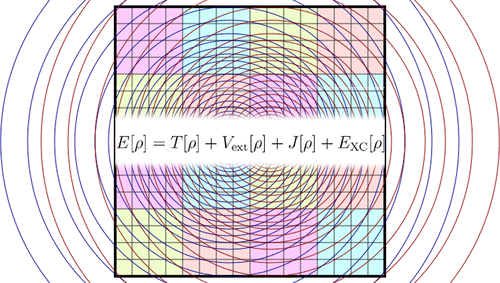当前位置:
X-MOL 学术
›
J. Chem. Theory Comput.
›
论文详情
Our official English website, www.x-mol.net, welcomes your
feedback! (Note: you will need to create a separate account there.)
Density Functional Theory under the Bubbles and Cube Numerical Framework.
Journal of Chemical Theory and Computation ( IF 5.7 ) Pub Date : 2018-07-10 , DOI: 10.1021/acs.jctc.8b00456 Pauli Parkkinen 1 , Wen-Hua Xu 1, 2 , Eelis Solala 1 , Dage Sundholm 1, 3
Journal of Chemical Theory and Computation ( IF 5.7 ) Pub Date : 2018-07-10 , DOI: 10.1021/acs.jctc.8b00456 Pauli Parkkinen 1 , Wen-Hua Xu 1, 2 , Eelis Solala 1 , Dage Sundholm 1, 3
Affiliation

|
Density functional theory within the Kohn-Sham density functional theory (KS-DFT) ansatz has been implemented into our bubbles and cube real-space molecular electronic structure framework, where functions containing steep cusps in the vicinity of the nuclei are expanded in atom-centered one-dimensional (1D) numerical grids multiplied with spherical harmonics (bubbles). The remainder, i.e., the cube, which is the cusp-free and smooth difference between the atomic one-center contributions and the exact molecular function, is represented on a three-dimensional (3D) equidistant grid by using a tractable number of grid points. The implementation of the methods is demonstrated by performing 3D numerical KS-DFT calculations on light atoms and small molecules. The accuracy is assessed by comparing the obtained energies with the best available reference energies.
中文翻译:

气泡和立方体数值框架下的密度泛函理论。
Kohn-Sham密度泛函理论(KS-DFT)ansatz中的密度泛函理论已被实现到我们的气泡和立方体实空间分子电子结构框架中,其中原子核附近包含陡尖的函数在原子中心扩展一维(1D)数字网格乘以球形谐波(气泡)。其余部分,即立方,它是原子一中心贡献与精确分子功能之间没有尖锐且平滑的差异,它通过使用可数的网格点在三维(3D)等距网格上表示。通过对轻原子和小分子执行3D数值KS-DFT计算,证明了该方法的实现。
更新日期:2018-06-26
中文翻译:

气泡和立方体数值框架下的密度泛函理论。
Kohn-Sham密度泛函理论(KS-DFT)ansatz中的密度泛函理论已被实现到我们的气泡和立方体实空间分子电子结构框架中,其中原子核附近包含陡尖的函数在原子中心扩展一维(1D)数字网格乘以球形谐波(气泡)。其余部分,即立方,它是原子一中心贡献与精确分子功能之间没有尖锐且平滑的差异,它通过使用可数的网格点在三维(3D)等距网格上表示。通过对轻原子和小分子执行3D数值KS-DFT计算,证明了该方法的实现。











































 京公网安备 11010802027423号
京公网安备 11010802027423号